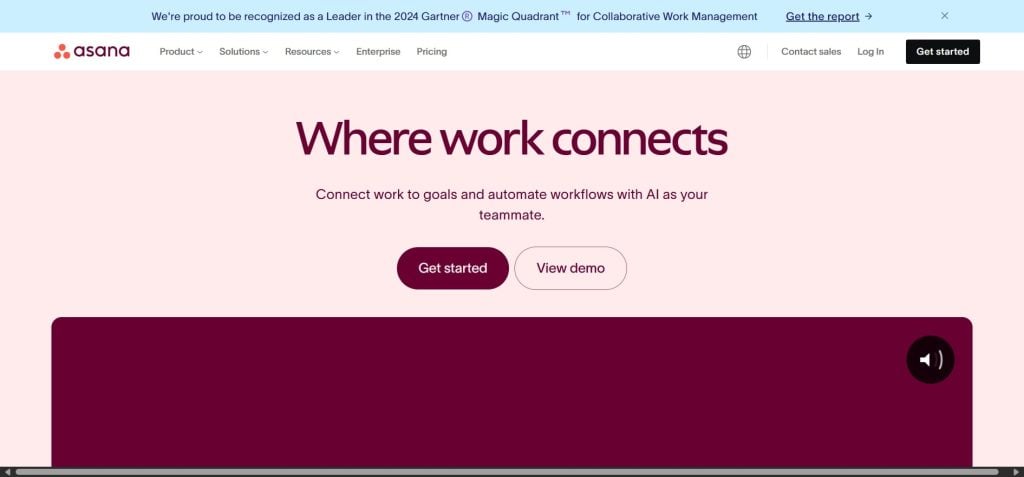Collaborating with teammates is a necessity for modern enterprises. The best collaboration tools can streamline workflow by letting users communicate, manage projects, and share documents on a single platform. In this blog, we compare the five best team collaboration tools to help you find the best solutions for your business.
The best collaboration software offer features like real-time messaging, video conferencing, task management, file sharing, and more. As technology evolves, these tools continue to adapt, providing innovative solutions to meet the changing needs of businesses. So, let’s evaluate the most potent collaboration platforms on the market.
What Factors Should You Consider When Comparing the Best Collaboration Tools?
The best collaboration tools are easy to use, scalable, flexible, and affordable. Here is the complete list for reference.
User-Friendly Interface
A simple and intuitive interface ensures team members can adopt the tool quickly without extensive training. Look for collaboration software with clearly labeled instructions and an intuitive interface.
Integration Capabilities
The ability to integrate with other software and services your team uses daily is crucial for a seamless workflow. Hence, ensure your shortlisted collaboration tool integrates with popular WordPress responsive themes, all essential third-party plugins, and reliable shared hosting servers.
Security Features
Robust security measures, including data encryption and two-factor authentication, are the golden standard of modern data protection. Don’t forget to evaluate the security features of your chosen collaboration tool before integrating them into your website.
Scalability
The best collaboration tools can accommodate your team’s growth and adapt to increasing project complexities. Therefore, keep future requirements in mind when choosing collaboration software for your organization.
Customer Support
Responsive and accessible support can resolve issues promptly, minimizing disruptions to your team’s productivity. So, check for quick replies and query resolutions when selecting a collaboration tool.
5 Best Collaboration Tools for Project Management in 2025
Here are the five best collaboration tools for project management. We compared the key features, pros, and cons to help you make an informed decision.
Slack

Slack is a leading team collaboration tool that offers real-time messaging, file sharing, and integration with numerous apps. Its channel-based organization allows teams to streamline workflow. With features like video calls and searchable message history, Slack enhances team communication and productivity. Its compatibility with powerful CRM tools makes it a versatile choice for businesses of all sizes.
Key Features
- Channel-Based Messaging: Organize team discussions into channels to keep projects focused.
- Integration Options: Connect with over 2,400 apps for seamless workflows.
- Searchable Archives: Retrieve past messages and files with powerful search functionality.
Pros
- Encourages informal team bonding with custom emojis and GIFs
- Offers robust notification settings for focused work
- Includes a dark mode to reduce eye strain
Cons
- Can get cluttered with excessive channels or unnecessary messages
Asana

Asana is a powerful project management tool designed to help teams organize, track, and manage work. It offers features like task assignments, deadlines, and project timelines, enabling teams to monitor progress and stay aligned. Asana’s user-friendly interface and customizable workflows make it suitable for various project types. The software easily integrates with other reputable collaboration software.
Key Features
- Task Management: Assign tasks, set deadlines, and track progress with ease.
- Project Timelines: Visualize workflows with Gantt chart-style views.
- Automation: Reduce repetitive tasks with automated workflows and rules.
Elevate Your Business With VPS Hosting
Unlock your website’s potential with Ultahost’s next-generation VPS server hosting. Buy VPS now for maximum flexibility, unlimited bandwidth, and unbeatable performance.
Pros
- Offers color-coded task prioritization
- Allows guest access for collaborating with clients
- Compatible with the WordPress environment and WP hosting plans
Cons
- Steep learning curve for new users
Google Workspace

Google Workspace is a comprehensive suite of productivity tools including Gmail, Docs, Drive, Calendar, and more. It enables real-time collaboration on documents, spreadsheets, and presentations, allowing team members to work together seamlessly. With cloud storage and robust security features, Google Workspace ensures that files are accessible and protected. Its integration with various collaboration platforms makes it a central hub for team collaboration.
Key Features
- Real-Time Collaboration: Edit documents, spreadsheets, and presentations simultaneously with team members.
- Cloud Storage: Securely store and access files anytime with Google Drive.
- Integrated Tools: Use Gmail, Calendar, and Meet for seamless productivity.
Pros
- Works offline for uninterrupted productivity
- Provides AI suggestions in emails and documents
- Offers generous free storage space with paid plans
Cons
- Needs internet connectivity to unlock full functionality
Trello

Trello is a visual project management tool that uses boards, lists, and cards to help teams organize tasks and projects. Its drag-and-drop interface makes it easy to assign tasks, set deadlines, and track progress. Trello’s flexibility allows teams to customize workflows to fit their specific needs. Integration with other collaboration tools enhances its capabilities, making it a popular choice for teams seeking a straightforward project management solution.
Key Features
- Visual Boards: Manage projects using boards, lists, and customizable cards.
- Drag-and-Drop Functionality: Quickly assign tasks and rearrange workflows.
- Power-Ups: Enhance capabilities with integrations like Calendar, Slack, and Google Drive.
Pros
- Mobile-friendly app for managing tasks on the go
- Provides a straightforward setup for small teams
- Includes templates for quicker project creation
Cons
- Less effective for managing complex workflows
Zoom

Zoom is a widely used video conferencing tool that facilitates virtual meetings, webinars, and collaboration. It offers features like screen sharing, breakout rooms, and recording, enabling effective communication among team members. Zoom’s high-quality video and audio ensure clear and productive meetings. Its integration with various collaboration software allows for a cohesive virtual meeting experience, essential for remote and hybrid teams.
Key Features
- High-Quality Video and Audio: Host clear, reliable virtual meetings.
- Breakout Rooms: Divide participants into smaller groups for focused discussions.
- Screen Sharing: Share screens for presentations or collaborative reviews.
Pros
- Supports large-scale webinars with interactive features
- Offers virtual backgrounds for professional or creative settings
- Includes live transcription for accessibility
Cons
- The free version has a limited meeting duration
Conclusion
The best collaboration tools can transform how your team works together. From seamless communication to effective project management, they improve productivity and efficiency. Therefore, selecting the right collaboration platform ensures your team meets its goals, whether you work remotely or in a hybrid setting.
Are you looking for a reliable web host for your corporate website? Choose Ultahost’s Dedicated Servers for flexible deployment options and custom configurations. Enjoy fast, secure, and reliable servers, DDoS protection, big storage volumes, and more!
FAQ
Which is the best collaboration tool in 2025?
The best collaboration tool in 2025 depends on your needs. For example, Slack excels in communication while Asana dominates in project management.
How do I find the best collaboration tools?
You need to identify your team’s requirements, test free trials, and compare features like integrations, ease of use, and pricing plans.
What are the key features of a collaboration tool?
The fundamental features of the best collaboration tools include messaging, task management, file sharing, integration with apps, and robust security to streamline workflows.
What are the benefits of using a collaboration tool?
Collaboration tools improve team communication, enhance productivity, and simplify project tracking, resulting in more efficient and successful outcomes.
Why do I need a collaboration tool?
A collaboration tool helps coordinate tasks, reduces email overload, and ensures every team member stays aligned and informed.
Do small businesses need collaboration tools?
Yes, small businesses benefit from collaboration tools by streamlining workflows, saving time, and improving communication, even with limited resources.
How much money should I spend on a collaboration tool?
Ideally, you should spend as little as possible when starting a business. Once revenue increases, consider upgrading to a premium plan.












